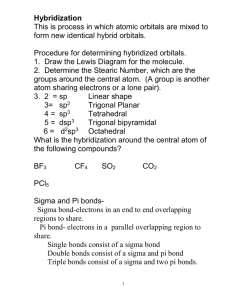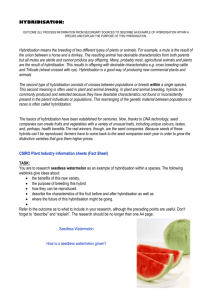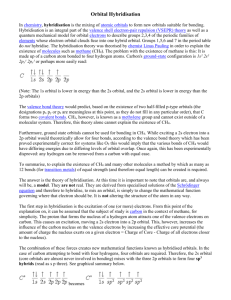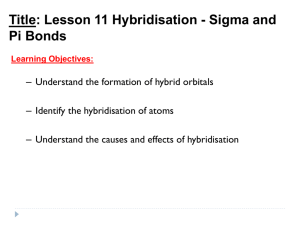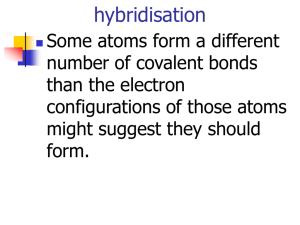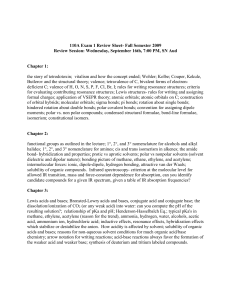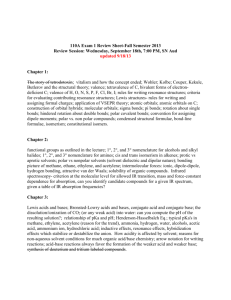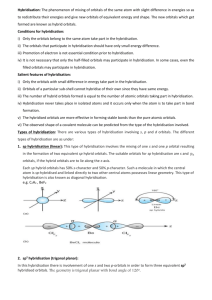Document
advertisement
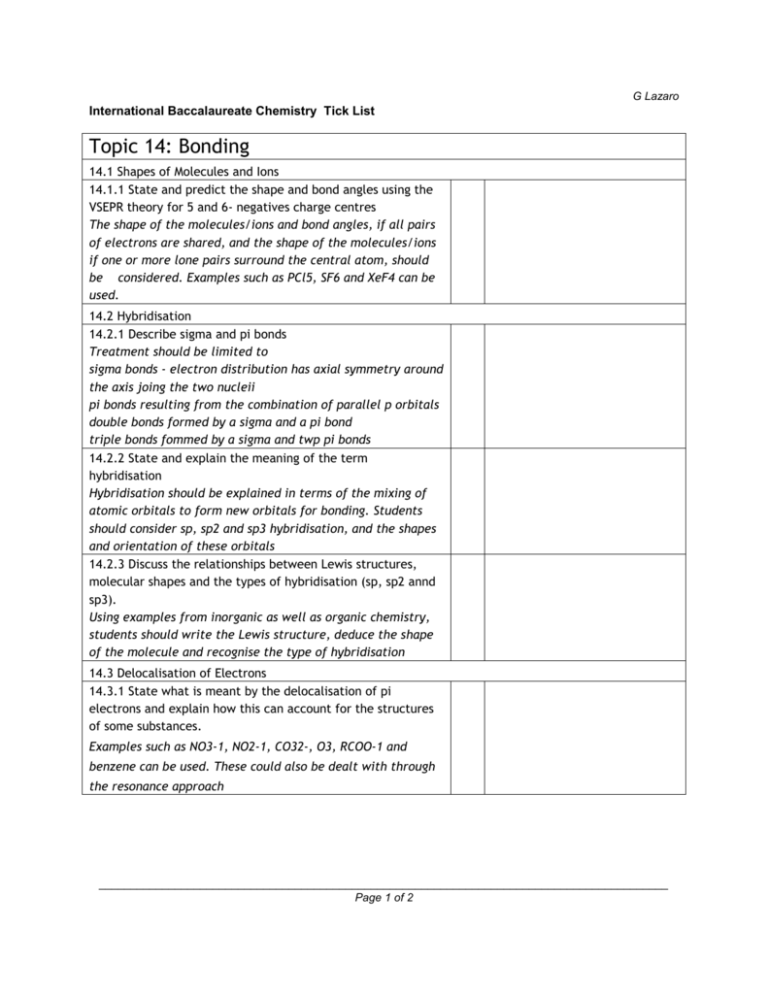
G Lazaro International Baccalaureate Chemistry Tick List Topic 14: Bonding 14.1 Shapes of Molecules and Ions 14.1.1 State and predict the shape and bond angles using the VSEPR theory for 5 and 6- negatives charge centres The shape of the molecules/ions and bond angles, if all pairs of electrons are shared, and the shape of the molecules/ions if one or more lone pairs surround the central atom, should be considered. Examples such as PCl5, SF6 and XeF4 can be used. 14.2 Hybridisation 14.2.1 Describe sigma and pi bonds Treatment should be limited to sigma bonds - electron distribution has axial symmetry around the axis joing the two nucleii pi bonds resulting from the combination of parallel p orbitals double bonds formed by a sigma and a pi bond triple bonds fommed by a sigma and twp pi bonds 14.2.2 State and explain the meaning of the term hybridisation Hybridisation should be explained in terms of the mixing of atomic orbitals to form new orbitals for bonding. Students should consider sp, sp2 and sp3 hybridisation, and the shapes and orientation of these orbitals 14.2.3 Discuss the relationships between Lewis structures, molecular shapes and the types of hybridisation (sp, sp2 annd sp3). Using examples from inorganic as well as organic chemistry, students should write the Lewis structure, deduce the shape of the molecule and recognise the type of hybridisation 14.3 Delocalisation of Electrons 14.3.1 State what is meant by the delocalisation of pi electrons and explain how this can account for the structures of some substances. Examples such as NO3-1, NO2-1, CO32-, O3, RCOO-1 and benzene can be used. These could also be dealt with through the resonance approach __________________________________________________________________________________________ Page 1 of 2 G Lazaro International Baccalaureate Chemistry Tick List 14.4 Structures of Allotropes of Carbon 14.4.1 Describe and explain the structures and properties of diamond, graphite and fullerene Students should recognise the type of hybridisation present in each allotrope and the delocalisation of electrons in graphite and fullerene. __________________________________________________________________________________________ Page 2 of 2
